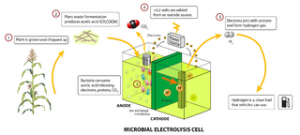
In California, it used to be that open-field-burning of on-the-farm waste was acceptable. Entire orchards or orchard prunings – the pruned limbs and what-not – assembled into piles, could be burned. The practice in state continued for years, but only on what had come to be termed “permissive burn days.” By 2010, those days were gone, the result of California Senate Bill 705 being enacted into law.
In fact, according to the California Environmental Protection Agency Air Resources Board (ARB), it was as far back as 1971, that “ARB adopted guidelines to control agricultural burning.” And it was in the previous year, 1970, that “Backyard burning was banned in selected areas of California,” notes the ARB.
For yard waste, meanwhile, that which is placed in containers placed either beside or along the street, for example, and picked up for processing, can then be reconstituted thereby turning it into usable compost, which can go right back into the yards or fields from whence it came – all made possible through green-waste recycling programs.
At one time I used to do my own tree and branch cutting and then haul the cuttings in my own vehicle to a wood recycling facility where the waste would then be processed into woodchips, sawdust, etc. for resale.
Then again there is commercial tree/stump/branch removal for those deciding to go that route.
As for dealing with on-farm agricultural waste, on the other hand, options include: shredding, chipping, composting, or depending on what the refuse itself consists of, it can be converted into electricity or heat via biomass or co-generation processes, cattle feed, animal bedding and more.
Combined, utilization of these so-called “green,” green-waste-disposal methods in California, have no doubt led to air quality improvement.
– Alan Kandel
This post was last revised on Dec. 23, 2019 @ 8:12 p.m. Pacific Standard Time.
I did not know that yard waste which is placed in containers placed either beside or along the street could be reconstituted, this is a good start for all to participate in renewable energy.
Sure. Yard cuttings reconstituted as compost and returned to soil (the soil being a plant-growing medium), brings the process full circle. And, green waste, depending on type, can be used to create the end-product hydrogen, for example, as shown in the illustration above.